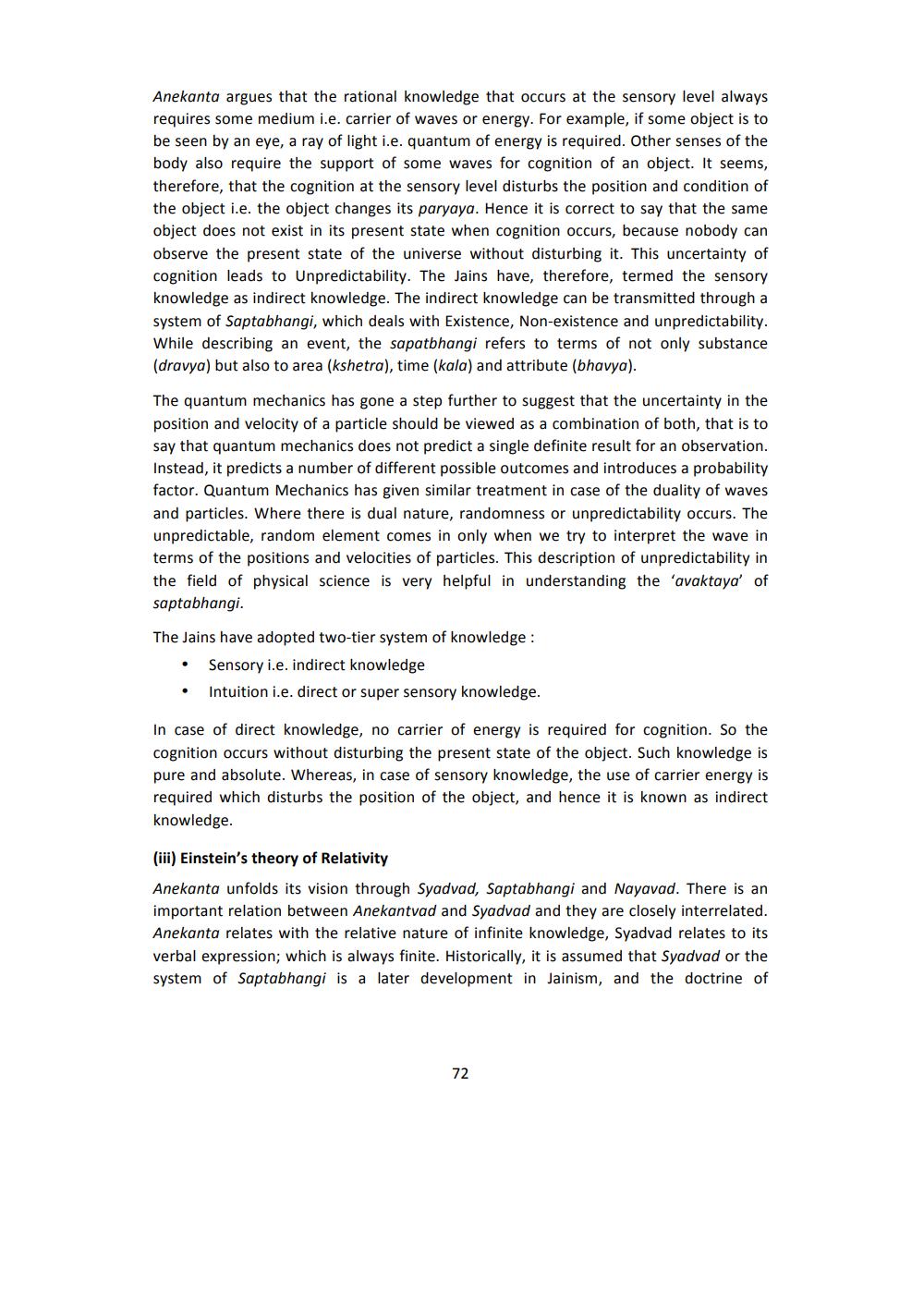________________
Anekanta argues that the rational knowledge that occurs at the sensory level always requires some medium i.e. carrier of waves or energy. For example, if some object is to be seen by an eye, a ray of light i.e. quantum of energy is required. Other senses of the body also require the support of some waves for cognition of an object. It seems, therefore, that the cognition at the sensory level disturbs the position and condition of the object i.e. the object changes its paryaya. Hence it is correct to say that the same object does not exist in its present state when cognition occurs, because nobody can observe the present state of the universe without disturbing it. This uncertainty of cognition leads to Unpredictability. The Jains have, therefore, termed the sensory knowledge as indirect knowledge. The indirect knowledge can be transmitted through a system of Saptabhangi, which deals with Existence, Non-existence and unpredictability. While describing an event, the sapatbhangi refers to terms of not only substance (dravya) but also to area (kshetra), time (kala) and attribute (bhavya).
The quantum mechanics has gone a step further to suggest that the uncertainty in the position and velocity of a particle should be viewed as a combination of both, that is to say that quantum mechanics does not predict a single definite result for an observation. Instead, it predicts a number of different possible outcomes and introduces a probability factor. Quantum Mechanics has given similar treatment in case of the duality of waves and particles. Where there is dual nature, randomness or unpredictability occurs. The unpredictable, random element comes in only when we try to interpret the wave in terms of the positions and velocities of particles. This description of unpredictability in the field of physical science is very helpful in understanding the 'avaktaya' of saptabhangi.
The Jains have adopted two-tier system of knowledge :
• Sensory i.e. indirect knowledge • Intuition i.e. direct or super sensory knowledge.
In case of direct knowledge, no carrier of energy is required for cognition. So the cognition occurs without disturbing the present state of the object. Such knowledge is pure and absolute. Whereas, in case of sensory knowledge, the use of carrier energy is required which disturbs the position of the object, and hence it is known as indirect knowledge.
(iii) Einstein's theory of Relativity Anekanta unfolds its vision through Syadvad, Saptabhangi and Nayavad. There is an important relation between Anekantvad and Syadvad and they are closely interrelated. Anekanta relates with the relative nature of infinite knowledge, Syadvad relates to its verbal expression; which is always finite. Historically, it is assumed that Syadvad or the system of Saptabhangi is a later development in Jainism, and the doctrine of
12




